Discovering that your cherished iPad is not turning on, despite having charged it for hours, can be a rather distressing situation. Frustration may mount as you attempt to troubleshoot the issue, only to be met with lackluster results.
When faced with such an exasperating scenario, it is crucial to understand the multitude of factors that may contribute to this peculiar situation. While charging your iPad often rejuvenates its battery life, certain underlying issues can prevent it from powering on altogether, leaving users puzzled and seeking answers.
Unraveling the enigma of why your iPad refuses to turn on can be a challenging task as various culprits are at play. From software glitches and hardware malfunctions to battery-related complications, the possibilities are diverse and demand thorough investigation.
Faulty Charging Cable
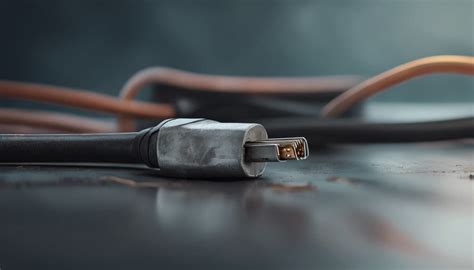
One of the potential causes for an iPad not turning on despite being charged is a faulty charging cable. In this section, we will explore the impact of a defective charging cable and its possible ramifications on the device's functionality.
A faulty charging cable can result in an interrupted power flow between the power source and the iPad. This can prevent the device from receiving the necessary charge to power on. It is important to note that even a partially damaged cable can cause issues, as it may not provide a consistent and stable connection.
There are several ways to identify a faulty charging cable. Visible signs of wear and tear, such as frayed or exposed wires, can indicate potential issues. Additionally, if the cable doesn't fit snugly into the charging port or if it easily disconnects, it may be a sign of a loose connection or a damaged cable.
Using a faulty charging cable not only prevents the iPad from turning on, but it can also put the device at risk. In some cases, a damaged cable can cause electrical problems, which may further damage the iPad or even pose a safety hazard.
To resolve the issue, it is advisable to replace the faulty charging cable with a new, genuine Apple cable or a certified third-party replacement. Using a high-quality cable ensures a secure and consistent connection, allowing the iPad to receive the necessary power to turn on.
In conclusion, a faulty charging cable can be a significant factor in preventing an iPad from turning on despite being charged. It is crucial to regularly inspect the cable for any signs of damage and replace it promptly to ensure the proper functioning of the device.
Insufficient Power Source
One of the possible causes for an iPad not turning on despite being charged is an insufficient power source. In this section, we will explore the factors that can contribute to a lack of adequate power supply and discuss potential solutions.
1. Incompatible or Faulty Charger: Using a charger that is not compatible with the iPad model or is damaged can result in insufficient power delivery. It is essential to ensure that the charger being used is specifically designed for the iPad and is in good working condition.
2. Low Battery Level: If the iPad's battery level is critically low, it might not have enough power to turn on even when connected to a charger. In such cases, it is recommended to leave the device plugged in for a while to allow the battery to accumulate enough charge to initiate the startup process.
3. Power Outlet Issues: Problems with the power outlet or the power source itself can lead to inadequate power supply to the iPad. It is advisable to try charging the device using a different power outlet or connecting it to a computer to see if the issue persists.
4. USB Port Limitations: When charging the iPad using a computer's USB port, it is important to consider that some USB ports might not provide sufficient power output. This can prevent the iPad from turning on, even if it appears to be charging. Using a different USB port or opting for a wall charger can help overcome this limitation.
5. Software Glitches: In rare cases, software glitches or system errors can result in power-related issues with the iPad. Performing a hard reset or restoring the device using iTunes can help resolve such software-related problems, allowing the iPad to turn on successfully.
When troubleshooting an iPad that won't turn on despite being charged, checking the power source and addressing any insufficiencies is a crucial step. By considering the factors mentioned above and implementing the appropriate solutions, users can increase their chances of resolving the issue and getting their iPad to power on reliably.
Drained Battery
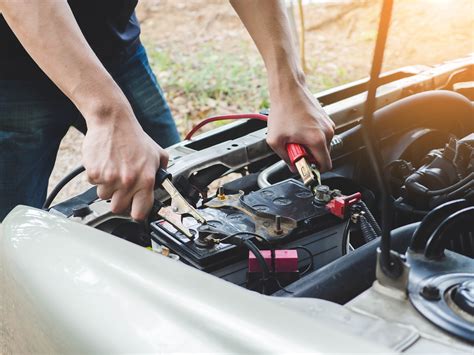
One of the potential causes for an iPad failing to turn on despite being charged is an entirely depleted battery. At times, the battery may become completely drained due to extended periods of inactivity or excessive power usage.
If an iPad is left unused for an extended period, its battery may discharge to a point where there is insufficient power to start the device. Similarly, power-intensive activities such as gaming or running multiple applications simultaneously can rapidly drain the battery, leaving it unable to power on.
To determine if a drained battery is the reason behind the iPad's failure to turn on, it is advisable to connect it to a power source using the original charging cable and adapter. The iPad should be left to charge uninterrupted for at least 30 minutes. During this time, a low battery indicator may appear on the screen, indicating that the battery was nearly drained.
Once the iPad has charged for a sufficient duration, pressing and holding the power button should initiate the startup process. If the device remains unresponsive, it may be necessary to attempt a forced restart or consult Apple support for further assistance.
Software Glitch
One of the potential factors that might cause your tablet to not power on, despite showing signs of charging, is a software glitch. This refers to a temporary issue within the device's operating system or applications that can interfere with its normal functioning.
Possible Causes:
| Recommended Solutions:
|
When faced with a software glitch, it is essential to identify the potential causes and implement the appropriate solutions. An outdated or incompatible app can trigger conflicts within the device's software, leading to malfunctioning or failure to turn on. Corrupted software files or the presence of malware can also disrupt the system's normal operations and prevent it from powering up.
To resolve these software glitches, restarting the iPad can be a simple and effective solution. It allows the device to refresh its system and clear any temporary issues. Additionally, updating or reinstalling problematic apps and performing a software update can help resolve compatibility and performance issues.
Furthermore, scanning the device for malware or viruses and removing them can eliminate potential obstacles that are hindering the device's functionality. In cases where conflicting software updates have occurred, resetting the device's settings can provide a fresh start and resolve any conflicts that may be preventing it from turning on.
Having a solid understanding of the various causes and solutions related to software glitches can greatly assist in troubleshooting the non-responsive iPad issues you may encounter.
Physical Damage
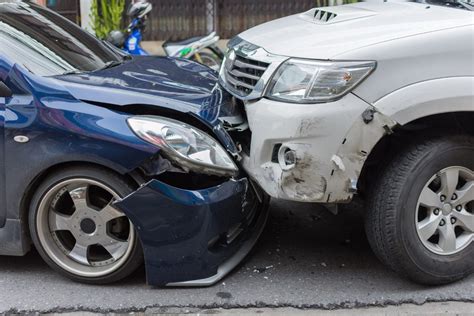
One common reason why your iPad might not turn on despite being charged is due to physical damage. In some instances, the device may have experienced external trauma or internal components might have been damaged as a result of an accident or exposure to extreme conditions.
Physical damage can range from cracked screens to broken components inside the iPad, such as the battery, charging port, or power button. These damages can prevent the device from receiving power or communicating properly with its hardware, leading to an unresponsive state.
It is important to handle your iPad with care to minimize the risk of physical damage. Avoid dropping or subjecting it to excessive pressure, and be mindful of any liquids or environmental factors that could harm the device.
If you suspect physical damage as the cause of your iPad not turning on, it may be necessary to seek professional assistance. A trained technician can assess the extent of the damage and recommend appropriate solutions, such as repairing or replacing the affected components.
Remember that physical damage is just one potential reason why your iPad may not turn on. Considering other troubleshooting steps, such as checking the charging cable, power source, or performing a hard reset, can help determine the root cause and resolve the issue.
Overheating
In the context of the topic "Top Reasons Why iPad Won't Turn On But Charges," one possible reason for this issue could be overheating. When an iPad becomes excessively hot, it may refuse to turn on despite showing signs of charging.
Overheating can occur due to a variety of factors, such as prolonged usage, exposure to direct sunlight, or running resource-intensive applications for extended periods. These activities put a significant load on the iPad's processor, leading to excessive heat generation.
To prevent overheating, it is essential to use the iPad in a well-ventilated area and avoid exposing it to direct sunlight for prolonged periods. Additionally, using resource-intensive applications sparingly and closing unnecessary background processes can help reduce the strain on the device's internal components.
If the iPad fails to turn on despite charging and overheating is suspected, it is advisable to allow the device to cool down for a period of time before attempting to power it on again. In some cases, the iPad's internal thermal protection mechanism may prevent it from turning on until it reaches a safe operating temperature.
In summary, overheating can be one of the contributing factors to an iPad not turning on despite being charged. Taking precautionary measures to avoid excessive heat generation and allowing the device to cool down if overheating is suspected can help resolve this issue.
Water Damage
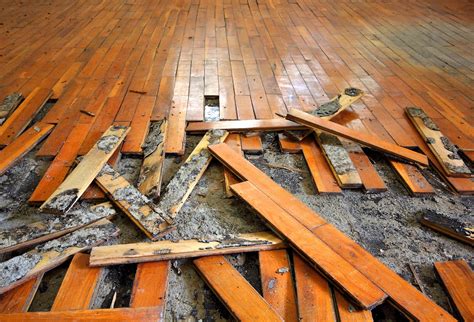
One of the possible causes for an iPad that is not turning on despite charging could be water damage. Water damage can occur if the iPad is exposed to liquids such as water, juice, or any other form of moisture. This can lead to malfunctioning of the internal components, resulting in the device being unresponsive.
It is important to note that water damage can affect the iPad in various ways, and the severity of the damage depends on the extent of exposure to liquid and the duration before appropriate measures are taken. Even a small amount of liquid can cause issues, as it can seep into sensitive areas and cause corrosion or short circuits.
Signs of water damage:
- An unresponsive iPad that does not turn on or show any signs of life.
- Unexpected screen behavior, such as flickering or displaying distorted images.
- An abnormal amount of heat coming from the device.
- The presence of moisture or condensation under the display or in the charging port.
- Unusual sounds coming from the device, such as clicking or buzzing noises.
What to do if your iPad has water damage:
If you suspect that your iPad has been exposed to water or any other liquid, it is crucial to take immediate action. Follow these steps to potentially resolve the issue:
- Power off the device: Press and hold the power button until the "Slide to power off" option appears, then slide it to turn off the iPad.
- Do not charge: Avoid connecting the iPad to a power source or attempting to charge it, as this can cause further damage.
- Dry the device: Use a soft, absorbent cloth to gently wipe the surfaces of the iPad, paying extra attention to the charging port and headphone jack.
- Absorb excess moisture: Place the iPad in a bag or container filled with uncooked rice or silica gel packets, which can help absorb moisture. Leave it in the container for at least 48 hours.
- Seek professional assistance: If the above steps do not resolve the issue, it is recommended to contact Apple Support or a professional repair service specialized in water damage.
Remember, dealing with water damage requires immediate action and proper handling to increase the chances of successful recovery. Prevention is the best approach, so it is essential to be cautious and keep liquids away from your iPad to avoid potential damage.
Frozen Screen
When your iPad experiences a frozen screen, it can be a frustrating situation that prevents you from using your device effectively. This section will explore the potential causes behind a frozen screen and provide some troubleshooting steps to help resolve the issue.
Identifying the Cause
If your iPad's screen is unresponsive and appears to be stuck, there are a few possible reasons for this issue. It could be due to a software glitch, a faulty application, or even a hardware malfunction. Identifying the underlying cause is essential in order to implement the appropriate solution.
Software Glitch
A software glitch can occur when the operating system becomes unresponsive or encounters an error. This can be caused by outdated software, incompatible applications, or conflicts within the system. In such cases, restarting your device or performing a force restart can often resolve the issue.
Faulty Application
Sometimes, a specific application can cause your iPad to freeze. This could be due to bugs or compatibility issues within the application itself. In these situations, force quitting the problematic app or uninstalling and reinstalling it may help restore normal functionality.
Hardware Malfunction
In rare cases, a frozen screen may be an indication of a hardware malfunction. This could be caused by a faulty display, a damaged touch screen, or other internal components. If the issue persists even after trying software-related solutions, it is advisable to contact a professional technician for further assistance.
Troubleshooting Steps
To address a frozen screen issue on your iPad, try the following troubleshooting steps:
- Perform a force restart by pressing and holding both the power button and the home button until the Apple logo appears.
- Check for any available software updates and install them if necessary.
- Force quit any unresponsive applications by double-clicking the home button and swiping up on the app preview to close it.
- Uninstall and reinstall any problematic applications.
- If the issue persists, consider contacting Apple Support or visiting an authorized service center for further assistance.
By following these troubleshooting steps, you can potentially resolve the issue of a frozen screen on your iPad and regain normal functionality.
Faulty Power Button
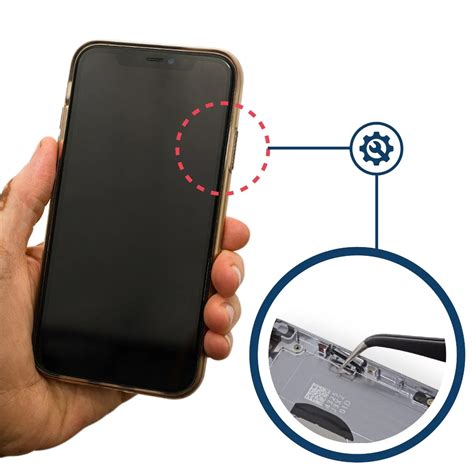
The functionality of the power button plays a crucial role in the operation of an iPad. However, when the power button becomes faulty or unresponsive, it can prevent the iPad from turning on, even when it charges.
A malfunctioning power button can render your iPad unresponsive, making it impossible to power on or off the device. This issue can occur due to physical damage or wear and tear over time.
Synonyms: defective power button, malfunctioning power button, unresponsive power button, broken power button, faulty power button.
Hardware Malfunction
In the realm of troubleshooting electronic devices, one recurrent issue that perplexes users and hinders the functionality of their iPad is a hardware malfunction. This elusive predicament baffles individuals seeking answers as to why their device fails to power on, even when it is successfully charging.
Unbeknownst to many, hardware malfunctions occur when physical components within the iPad encounter disruptions or failures. These malfunctions can manifest in various forms, such as a faulty power button, a damaged battery, or a loose internal connection. When any of these hardware components encounter issues, the iPad's ability to turn on is consequently hindered.
A hardware malfunction in an iPad can often go unnoticed, as it is not visually identifiable and may not be immediately apparent to the user. However, it is imperative to understand that this category of malfunction typically requires technical expertise and professional intervention for resolution.
The first step in addressing a hardware malfunction is to identify the problematic component. This process involves conducting a diagnostic test, which may require specialized tools or software. Once the specific issue has been pinpointed, appropriate measures, such as repair or replacement, can be implemented to rectify the hardware malfunction.
It is important to note that attempting to resolve hardware malfunctions without appropriate knowledge and expertise can exacerbate the problem or cause further damage. Therefore, it is highly recommended to seek assistance from authorized service centers or experienced technicians, who possess the necessary resources and skills to diagnose and repair hardware malfunctions effectively.
In conclusion, while a plethora of reasons can contribute to an iPad's failure to power on despite charging, a hardware malfunction should not be overlooked. Understanding the concept and consequences of hardware malfunctions can empower users to make informed decisions and seek professional help when facing such challenges.
[MOVIES] [/MOVIES] [/MOVIES_ENABLED]FAQ
My iPad is not turning on even though it charges. What could be the reason?
There could be several reasons why your iPad is not turning on even though it charges. It could be due to a software issue, a problem with the charging port, a faulty power button, or a drained battery.
How can I fix my iPad if it charges but won't turn on?
If your iPad charges but won't turn on, you can try performing a hard reset by holding down the home button and the power button simultaneously for about 10-15 seconds. If that doesn't work, you can also try connecting your iPad to a computer and using iTunes to restore it. If none of these solutions work, it may be best to contact Apple support or visit an authorized service center.
Is it possible that my iPad won't turn on because the battery is completely drained?
Yes, it is possible that your iPad won't turn on because the battery is completely drained. In such cases, connect your iPad to a charger and let it charge for at least 30 minutes. After that, try turning it on again. If the battery was completely drained, this should resolve the issue.
What should I do if my iPad charges but only shows a black screen?
If your iPad charges but only shows a black screen, first make sure that the screen is not locked or in sleep mode. If that's not the case, try performing a hard reset by holding down the home button and the power button simultaneously for about 10-15 seconds. If the black screen persists, it could be a hardware issue, and you should consider contacting Apple support or visiting an authorized service center for repair.
My iPad was working perfectly fine, and suddenly it won't turn on. What could have caused this?
If your iPad was working perfectly fine and suddenly won't turn on, it could be due to a software crash or glitch. Try performing a hard reset by holding down the home button and the power button simultaneously for about 10-15 seconds. If that doesn't work, it's possible that there could be a hardware issue. In such cases, contacting Apple support or visiting an authorized service center would be advisable.




